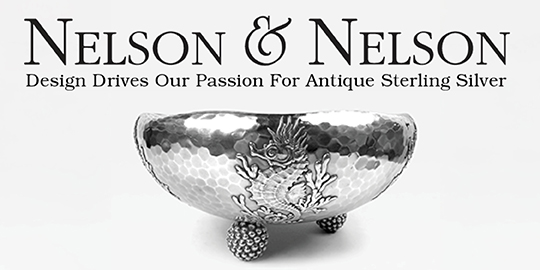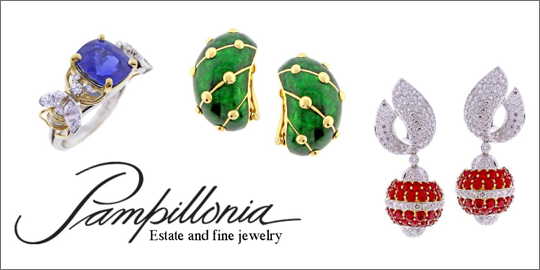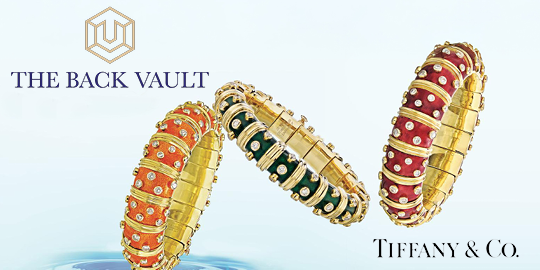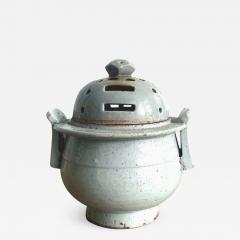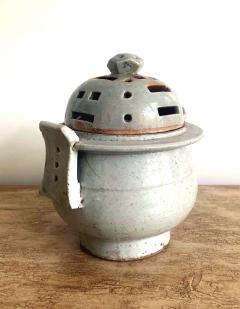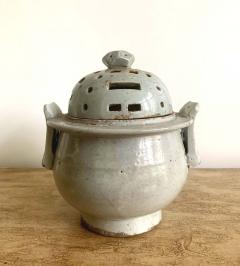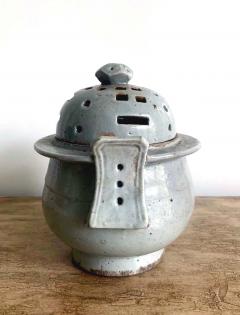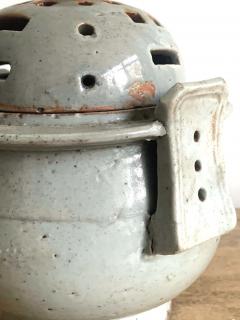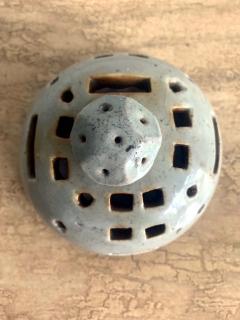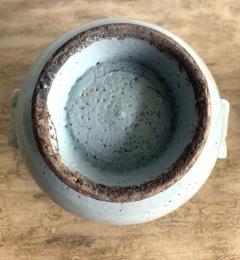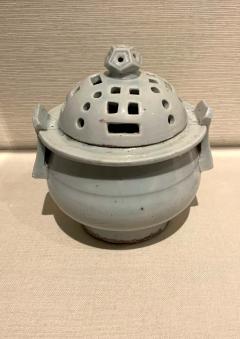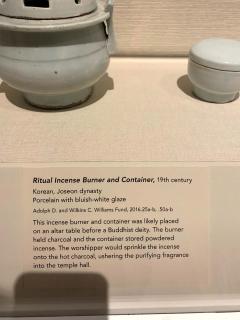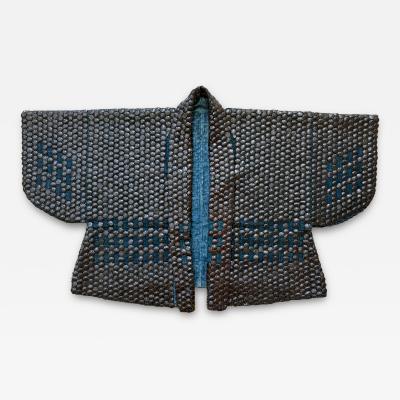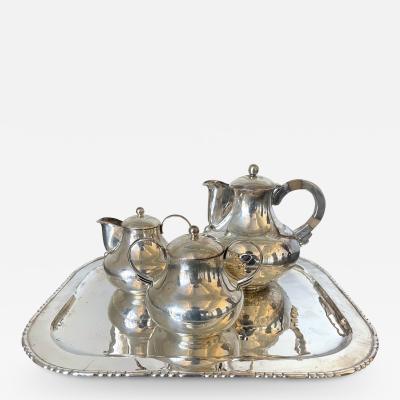Korean Ritual Incense Burner Joseon Dynasty
-
Description
An antique Korean ritual incense burner circa 19th century, late Joseon Dynasty. It was made in Bunwon Kiln in Gwangju, Gyeonggi Do, near Seoul. The ceramic container has a thickly body with white bluish celadon glaze. It is of an archaic Chinese form with rounded base and two ears. Interestingly, the cover features groups of pierced trigram in the shapes of four of the eight Bagua (Palgwae in Korean) symbols: Kan, Li, Dui and Zhen. Incense burner like this has a strong religious significance and was believed to be used on the altar table in the Buddhist temple for worshiping. As a result. the lid still retains heavy smoke residues.
An nearly identical piece is in the collection of Virginia Museum of Fine Art, 2016.25a-b . See last two photos taken by us.
Also illustrated on page 312 in "Korean Art from the Gompertz and Other Collections in the Fritzwilliam Museum, Cambridge (shown in the last two photos). -
More Information
Origin: South Korea Period: 19th Century Materials: ceramic Condition: Fair. Wear consistent with age and use. a small chip under the lid. General surface wear and patina of smoke residues, spotty losses of glaze (maybe during the making), some surface crackle lines all as shown. Creation Date: 19th century Styles / Movements: Bespoke, Asian, Traditional Patterns: Asian/Oriental, Geometric, Traditional Incollect Reference #: 394064 -
Dimensions
H. 6.5 in; Diam. 6.25 in; H. 16.51 cm; Diam. 15.88 cm;
Message from Seller:
Tishu, based in Atlanta, GA, offers a diverse collection ranging from Neolithic art to 20th-century collectibles, with a focus on Mid-century design, Japanese and Korean art, Asian textiles, and Contemporary Aboriginal art. Driven by a passion for timeless beauty, the gallery is open by appointment only and offers works that span 5,000 years of history. Reach them at 305-400-0561 or tishu@tishugallery.com.
Sold







